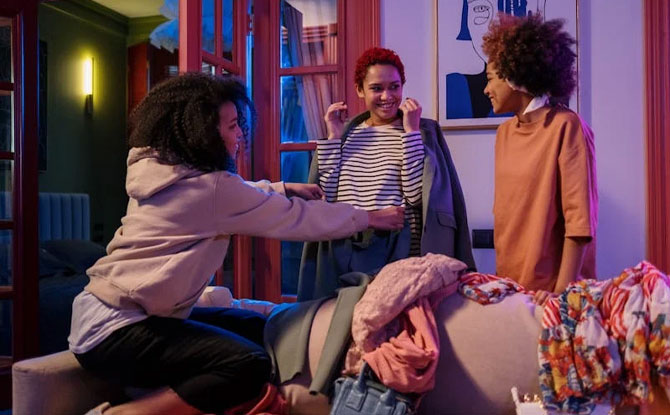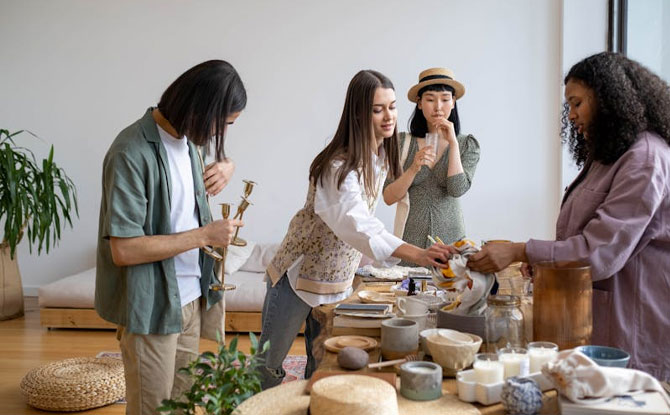If you’re looking for a way to bring your community closer together while promoting sustainability, hosting a Community Swap Meet is a fantastic idea. These events allow neighbors to trade items they no longer need for things they want, fostering a sense of connection and environmental responsibility. In this guide, we’ll walk you through the steps to organize a successful swap meet that reduces waste and strengthens bonds in your neighborhood.
What is a Community Swap Meet?
A Community Swap Meet is an event where neighbors come together to exchange goods like clothes, books, toys, and home items. Instead of throwing away items you no longer need, you can swap them for something else, promoting sustainability and reducing waste. It’s a wonderful opportunity to connect with others in your community, share resources, and give new life to used items. Whether you’re looking for gently used clothes or seeking new books to read, a swap meet offers a fun, eco-friendly way to refresh your belongings.
Why Host a Community Swap Meet?

Hosting a Community Swap Meet brings multiple benefits. Not only do you reduce waste by exchanging items, but you also help support a zero-waste lifestyle in your community. Swap meets are a great way to keep things out of landfills while offering a more sustainable option to shopping. Moreover, they provide an opportunity to meet new people, strengthen neighborhood ties, and share values. Whether it’s promoting eco-friendly practices or simply offering a way for neighbors to share resources, swap meets make a positive impact on both the environment and the local community.
Planning Your Swap Meet
The success of a Community Swap Meet starts with careful planning. Here are a few essential tips for organizing your event:
- Choose the Right Date and Venue: Pick a date that doesn’t clash with other local events. Ensure the venue is easily accessible, spacious, and has basic amenities like restrooms and seating.
- Set Clear Rules for Swapping: Determine what types of items will be allowed for exchange (e.g., clothes, books, household goods) and communicate these guidelines clearly to participants.
- Organize the Setup: Designate specific areas for different categories of items, such as clothing, books, and homeware, to make it easy for participants to find what they’re looking for. Ensure there is plenty of space for browsing and swapping.
- Plan for Leftover Items: Decide in advance what to do with items that aren’t swapped. Consider donating them to local charities or organizing another event to give them a second chance.
Pre-Swap Arrangements

To make your Community Swap Meet run smoothly, prepare in advance. Here are a few important steps:
- Promote the Event: Use local platforms like Facebook groups, NextDoor, and community newsletters to spread the word. Don’t forget physical flyers in places like libraries and coffee shops.
- List Items in Advance: Encourage participants to post what they’re bringing to the swap. This can be done through online community boards or a Facebook event page, helping everyone plan ahead and know what to expect.
- Get Volunteers: Recruit volunteers to help with the setup and during the event. Volunteers are invaluable in ensuring everything runs smoothly and make the event feel more welcoming.
Hosting the Swap Meet
On the day of the event, your role as a host is crucial. Here’s how to make sure everything goes according to plan:
- Set Up a Welcoming Space: Organize tables or areas for different categories of items and ensure there are clear signs directing attendees.
- Foster a Friendly Atmosphere: Greet participants warmly and be active throughout the event to assist with any issues. Encourage fairness and respect during the exchanges.
- Maintain Time Management: Stick to a schedule to avoid long lines or overcrowding. Regular announcements help keep the event moving smoothly.
- Provide Extras: Consider adding value to the event by offering small activities, food, or music. These extras make the swap meet more enjoyable and encourage people to stick around longer.
Engaging Attendees

To make your Community Swap Meet a hit, attract as many people as possible. Here are some ways to engage attendees:
- Promote on Social Media: Use platforms like Instagram and Facebook to create buzz about your swap meet. Share event details, photos, and exciting updates to encourage attendance.
- Incentivize Participation: Offering small incentives, such as free snacks or a raffle ticket for every item swapped, can encourage more people to attend and participate.
- Emphasize the Environmental Impact: Highlight the positive environmental effects of swapping over shopping. Talk about how it helps reduce waste and promote sustainability in your community.
- Foster a Community Spirit: Encourage neighbors to bring friends and family to make the swap meet feel more like a social event. When people feel connected, they’re more likely to return for future swaps.
Creative Ideas for Swap Items
Get creative when thinking about what to bring to your Community Swap Meet. Besides typical items like books and clothes, consider these ideas:
- Homemade Goods: Handcrafted items, such as knitted scarves or homemade candles, make great swaps.
- Skills Exchange: Offer your skills in exchange for others. For example, swap a cooking lesson for a gardening workshop.
- Toys and Games: Gently used toys, puzzles, and board games are excellent options for family-oriented swaps.
- Gardening Supplies: Consider swapping gardening tools, seeds, or plants for a more eco-conscious swap.
Handling Leftover Items

After the swap meet, there will likely be leftover items. You can donate them to local charities like Goodwill or The Salvation Army. Another option is to host a follow-up event or offer the items online for others to pick up. The goal is to ensure that no usable items go to waste and that the community continues to benefit from the items long after the event.
Hosting a Community Swap Meet
Hosting a Community Swap Meet is a fantastic way to reduce waste, promote sustainability, and strengthen neighborhood connections. With thoughtful planning and a focus on community engagement, you can create a fun, eco-friendly event that benefits everyone involved. By following these tips and incorporating creativity into your swaps, your event is sure to be a success. Remember, it’s not just about trading items—it’s about creating a sense of togetherness and making a positive impact on the environment. Get started planning your Community Swap Meet today!

